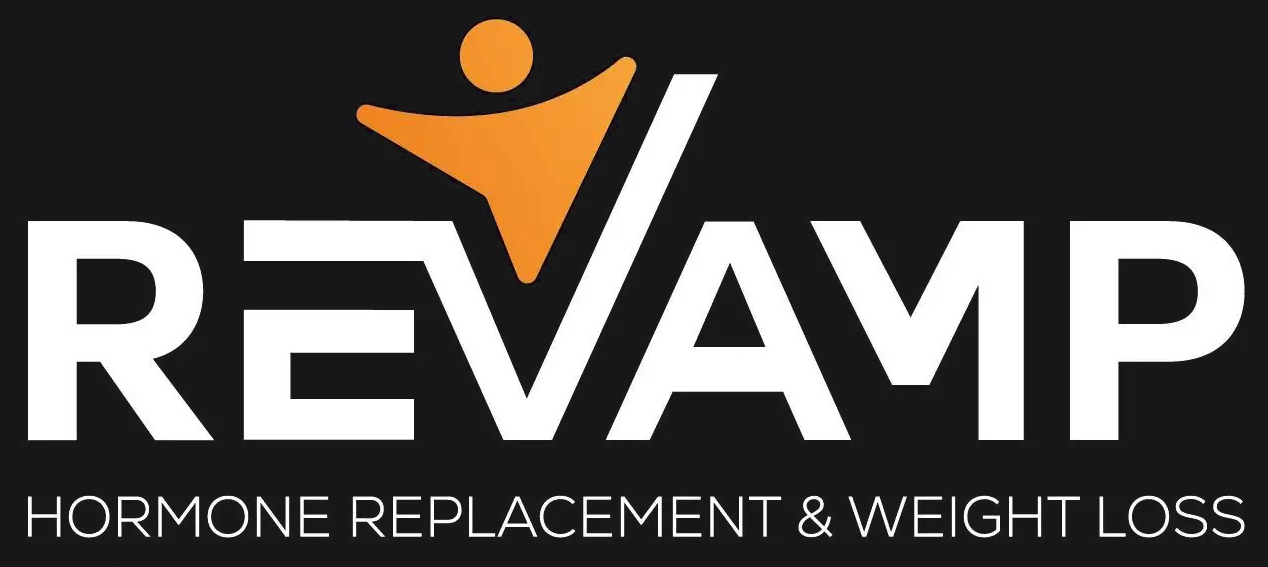Blog
Revamp Hormone Replacement and Weight Loss

By Srikar Karanam
•
September 15, 2025
Have you been feeling tired for no reason, gaining weight without explanation, or noticed that your mood has changed? If these are unusual changes for you, they could be signs of hypothyroidism. At Revamp , we know how important it is to notice these early signs, especially if you have subclinical thyroid problems, where the symptoms can be mild but still have a big effect on your health. For that reason, we’ve created this blog to go over the signs and symptoms for you to take charge of your health. The Basics: What Causes Hypothyroidism? Let’s start off with the basics, what causes hypothyroidism? To put it simply, hypothyroidism is the result of insufficient hormone production by the thyroid gland or suboptimal use of the hormone by your body. Immunological conditions such as Hashimoto's thyroiditis, medications, radiation treatment, environmental toxic metals or insufficient iodine can cause this. In some conditions such as Poly Cystic Ovarian Syndrome (PCOS), you body cannot use thyroid hormone efficiently so you can experience symptoms of hypothyroidism even if your lab numbers are within normal range. Signs and Symptoms of Hypothyroidism Hypothyroidism can present itself in several ways, affecting both your physical and emotional well-being. These are many of the typical signs of hypothyroidism: Fatigue or prolonged exhaustion, Unexplained weight gain, Cognitive impairment such as inability to focus, memory lapses, or mental lethargy, Cold sensitivity such as abnormal sensation of coldness, particularly in the extremities such as the hands and feet, Skin changes such as dry, scaly or discolored skin, Hair thinning or excessive hair loss, Emotional fluctuations such as heightened sensations of sadness or irritation, Among others… While these signs and symptoms are some of the most common markers for this condition, it can be hard to tell if someone has subclinical hypothyroidism since the symptoms are mild and are often mistaken for other medical problems or concerns. That said, it's important to catch these signs early because even mild thyroid changes can have a negative impact on your health. If you notice any of these signs, you should talk to a medical professional right away who has experience with this type of condition and can help properly diagnose and treat the issue. Importance of Proper Hypothyroidism Diagnosis To treat hypothyroidism effectively, it is extremely important to get an accurate evaluation by a professional who has experience with this type of medical condition. Any thyroid problems that aren’t properly diagnosed and treated can cause long-lasting pain and affect your day-to-day quality of life. For that reason, it's important to talk to someone who has the right knowledge about this medical condition and has the experience of spotting signs and symptoms early. Ultimately, the right evaluation will help you get the right care for your condition and can greatly improve your overall quality of life moving forward. Treatment for Hypothyroidism: There are many treatment modalities to help treat subclinical to clinical hypothyroidism. Treatments can range from dietary optimization, natural remedies, supplements, Natural thyroid replacement and synthetic thyroid replacement. The best treatment plan should be individualized, and it will depend on the severity of symptoms, personal lifestyle, and your goals.

By Srikar Karanam
•
September 15, 2025
Being a mom is a beautiful, rewarding role—but let’s face it, it can also be exhausting. Between work, childcare, errands, and managing a household, your own health often falls to the bottom of the to-do list. But here’s something important that every woman needs to know, especially after 30: we naturally begin to lose muscle mass with age, and unless we actively work to maintain it, this loss can affect everything from how we feel to how we function. 🚨 The Hidden Risk: Muscle Loss After 30 Starting as early as age 30, women begin to lose approximately 3–8% of their muscle mass per decade, and the pace often speeds up after age 60. That means within just five years, you could lose as much as 4% of your muscle mass—even if your weight on the scale stays the same. It’s a slow, silent shift that impacts energy, balance, strength, and metabolism. This muscle loss, known as sarcopenia, doesn't just make us feel weaker. It can also: Lower our metabolism, making it easier to gain fat Increase the risk of falls, injuries, and joint pain Contribute to bone loss, especially in postmenopausal women Make everyday tasks like lifting kids or groceries more difficult That’s why maintaining your muscle is not just about looking toned—it’s about preserving your independence, confidence, and overall quality of life as you age. 💪 Why Muscle and Bone Health Matter So Much Muscle and bone health are deeply connected. When you engage in strength training, your muscles pull on your bones, stimulating them to grow stronger and denser. This is especially important for women, who are more prone to osteoporosis and bone fractures later in life. Maintaining muscle mass helps: Support healthy posture and spinal alignment Improve balance and coordination, reducing the risk of falls Protect joints and reduce strain on ligaments Increase longevity and functional fitness (the ability to do what you love without pain or limitation) For busy moms, this means more strength for playing with your kids, running errands, managing stress—and doing it all with greater ease and energy. 🧠 Boosting Mental Health and Immunity Through Movement Let’s not overlook what exercise can do for your mind and immune system. Regular movement isn’t just a physical necessity—it’s a mental health lifeline. Exercise has been proven to: Lower stress hormones like cortisol Increase feel-good chemicals like serotonin and endorphins Improve mental clarity, focus, and sleep quality Strengthen the immune system by improving circulation and reducing inflammation In other words, moving your body helps you stay more emotionally resilient and physically healthy. That’s a win-win for any mom trying to stay calm and energized in the chaos of daily life. 📏 The Power of Objective Measurement: 3D Body Scans When it comes to staying motivated, objective feedback can be incredibly powerful. We often rely too heavily on the number on the scale, which doesn’t tell the full story—especially when you’re building muscle and losing fat at the same time. That’s where 3D body scans come in. These quick, non-invasive scans offer: Accurate body composition analysis (how much muscle vs. fat you have) Circumference tracking for areas like waist, hips, and thighs Visual progress snapshots to help you see changes over time Postural analysis to spot any imbalances that might lead to injury Doing a scan every 8–12 weeks gives you a clear, motivating picture of how your efforts are paying off—even if the mirror or scale hasn’t caught up yet. ⏱️ 45-Minute (or Less) Full-Body Workout for Busy Moms Now, let’s talk action. You don’t need a gym membership or fancy equipment to maintain muscle. This simple routine is designed for home, requires minimal equipment, and takes less than 45 minutes from start to finish. Warm-Up (5 minutes) Wake up the muscles and prep your joints: Jumping jacks – 1 minute Arm circles (forward & backward) – 1 minute Bodyweight squats – 1 minute Walking lunges – 1 minute High knees or march in place – 1 minute Strength Circuit (30 minutes) Complete 2–3 rounds with 30–60 seconds rest between exercises: Bodyweight or Dumbbell Squats – 15 reps. Strengthens glutes, hamstrings, and thighs. Push-Ups (modified or full) – 10–15 reps. Builds upper body and core strength. Glute Bridges – 15 reps. Activates glutes and improves pelvic stability. Bent-Over Rows (with resistance band or dumbbells) – 12 reps. Works the back and arms. Reverse Lunges – 10 reps per leg. Improves balance, strengthens legs and core. Plank Hold – 30 to 60 seconds. Builds core strength and shoulder stability. Overhead Shoulder Press (using dumbbells or water bottles) – 12 reps. Strengthens shoulders and upper arms. Cool Down (5–10 minutes) Help your body recover and reset: Forward fold for hamstrings Cat-cow stretch for spine mobility Child’s pose to relax back and hips Seated twist for the core Deep breathing or short meditation (2–3 minutes) 🌟 Final Words: Your Strength Is Your Superpower As a mom, your strength fuels your ability to care for others—but it also empowers you to feel good, move freely, and live with confidence. Here’s what to remember: Muscle is more than appearance—it’s essential for long-term health Regular strength training can be quick, simple, and done at home Objective tools like 3D scans keep you motivated and informed Exercise is one of the most powerful ways to support your mental health and immunity You don’t need hours in the gym—you just need consistency, intention, and a few pockets of time. Even two to three short sessions a week can help you stay strong, energetic, and ready for anything motherhood throws your way. 🎯 Ready to track your progress with real data? It takes less than 5 minutes to get a full 3D body scan, and it’s offered at a nominal rate at Revamp Hormone Replacement Therapy. Schedule your scan and see how your body is changing—inside and out.

